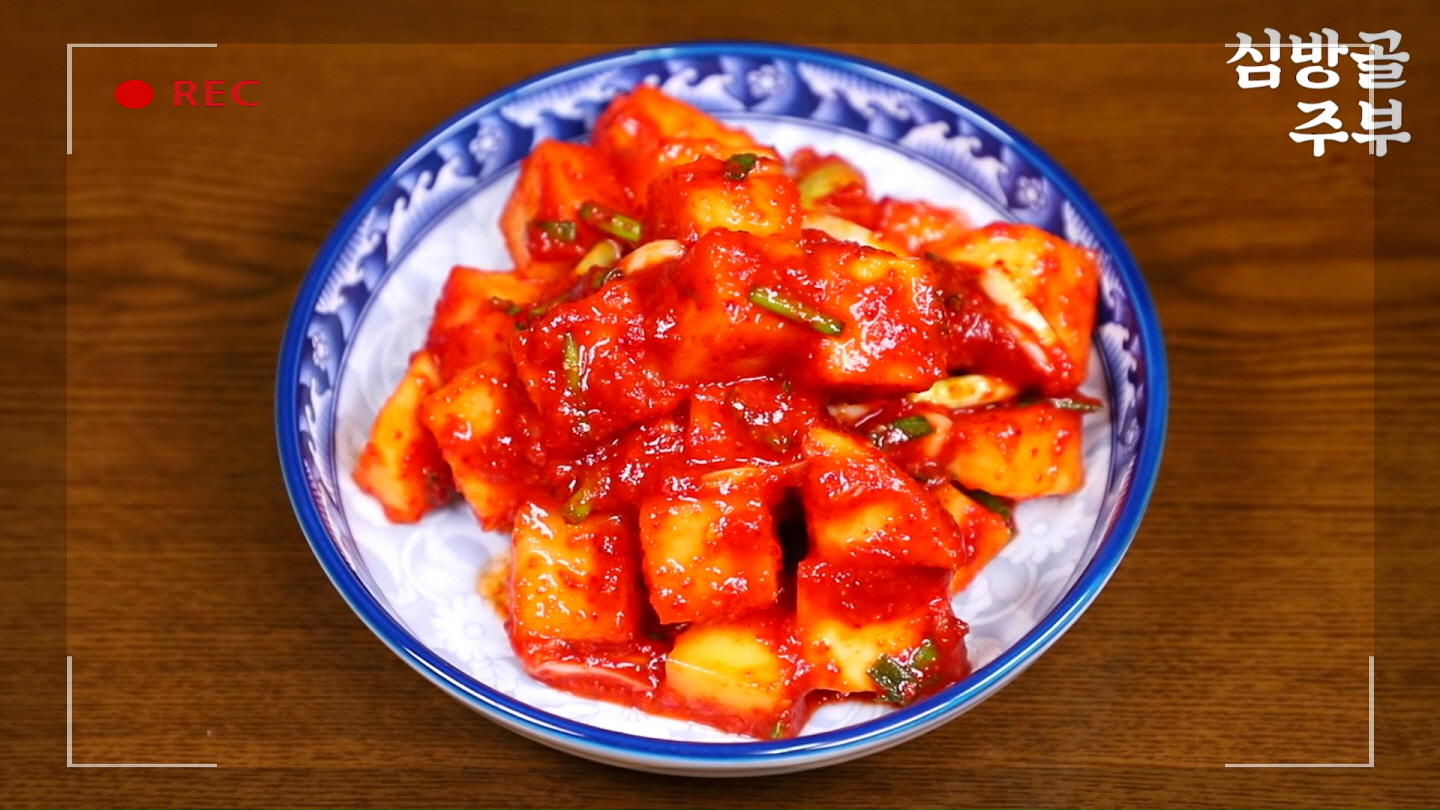Delicious and Tangy Kkakdugi (Korean Radish Kimchi)
Mastering the Art of Making Kkakdugi at Home

This recipe for making delicious Kkakdugi is designed to be a game-changer for home cooks and professional chefs alike, seeking the ultimate golden ratio. In just 3 minutes, you’ll unlock a Kkakdugi recipe you’ll use for life. Check the description for the full details!
Main Ingredients- 2kg Korean radish (choose firm and fresh ones)
- 1 small onion
- 1/4 pear (adds sweetness and a refreshing taste)
- 1 handful of green onions (about 50g, fresh)
- 40g glutinous rice flour (or all-purpose flour)
- 40g sugar (adjust to your radish’s sweetness)
- 30g coarse sea salt (for salting the radish)
- 300ml water
- 150g salted shrimp (rinsed clean)
- 100g red pepper flakes (gochugaru, preferably sun-dried)
- 1 handful garlic (about 50g, minced or crushed)
- 1 tbsp ginger syrup solids (or about 1 small piece of fresh ginger)
Seasoning & Extras- Honey (for adjusting final sweetness, optional)
- Honey (for adjusting final sweetness, optional)
Cooking Instructions
Step 1
First, wash the Korean radish thoroughly. You can leave the peel on for extra texture and nutrients, or peel it for a cleaner taste. Cut the radish into bite-sized cubes, about 2-2.5cm each. Aim for pieces that are neither too large nor too small, making them comfortable to eat.
Step 2
Next, prepare the green onions. They add a refreshing flavor and aroma to the Kkakdugi. Wash them well, pat them dry, and chop them into pieces similar in size to the radish cubes, or slightly smaller. With the ingredients prepped, you’re halfway to making delicious Kkakdugi!
Step 3
In a large bowl, combine the cut radish with 30g of coarse sea salt and 40g of sugar. Mix well to ensure all pieces are coated. Let the radish sit for 1 hour and 30 minutes to salt. The sugar helps to balance any bitterness from the radish, prevents the Kkakdugi from becoming too watery, and contributes to a crisp texture. (If your radish is naturally sweet, you can reduce or omit the sugar.)
Step 4
During the salting process, turn the radish pieces over once or twice to ensure even salting. After 1 hour and 30 minutes, drain the radish in a colander. Gently shake off excess liquid to prevent too much sugary brine from diluting the seasoning later.
Step 5
Let’s make the essential glutinous rice paste for the Kkakdugi. In a small pot, combine 250ml of water and 40g of glutinous rice flour. Whisk until smooth, then cook over low heat, stirring constantly, until it thickens to a paste-like consistency. Remove from heat and let it cool completely. This paste helps the seasoning adhere beautifully to the radish, enhancing its flavor.
Step 6
Now for the flavor-boosting seasoning paste! In a blender, combine 1/4 pear, 1 onion, 1 tbsp ginger syrup solids (or a piece of fresh ginger about the size of a small clove), 150g of rinsed salted shrimp, and 50g of minced garlic. Blend until smooth. This mixture is key to the Kkakdugi’s deep and refreshing taste.
Step 7
Add about 100g of red pepper flakes (gochugaru) to the drained radish. Initially, you can use about 2 handfuls and adjust later to your preference. Gently toss to coat the radish and let it sit for 10 minutes. This step allows the pepper flakes to infuse the radish with color and a spicy kick, creating that signature Kkakdugi look and taste.
Step 8
It’s time to assemble the Kkakdugi! Add the cooled glutinous rice paste and the blended pear-onion-shrimp mixture to the radish. Mix everything thoroughly. Add the remaining red pepper flakes to achieve your desired level of spiciness and color. You’ll start to notice the wonderful aroma of delicious Kkakdugi developing.
Step 9
Finally, add the chopped green onions and gently mix them in. If you prefer a sweeter finish, drizzle in a little honey or add a touch more sugar. Toss gently to combine all ingredients evenly. Your crisp and flavorful Kkakdugi is ready! It’s delicious to eat right away, but letting it ferment for about a day will deepen its flavors even further.


